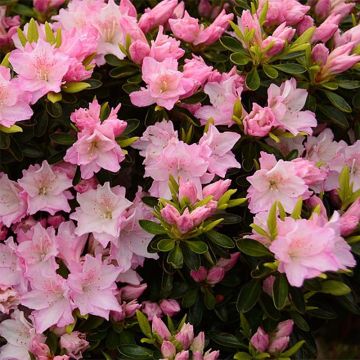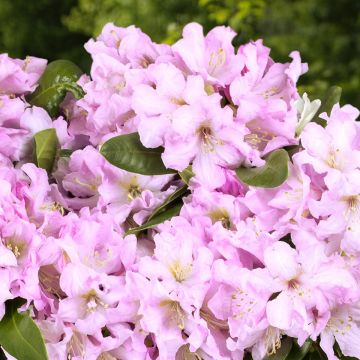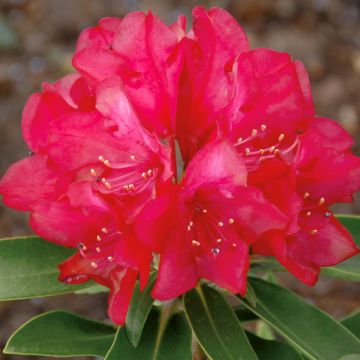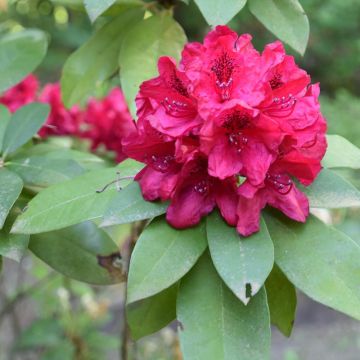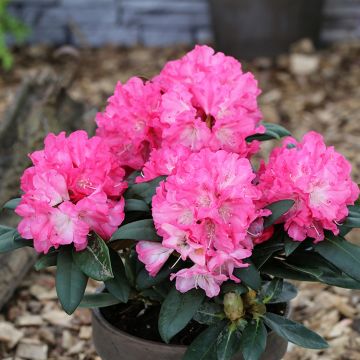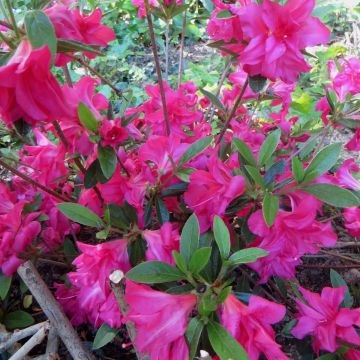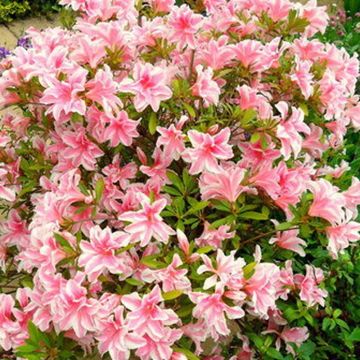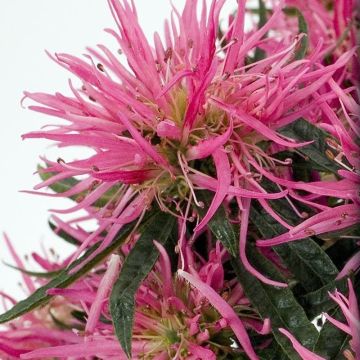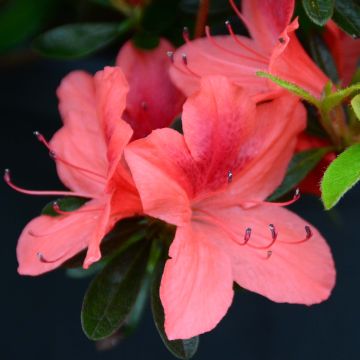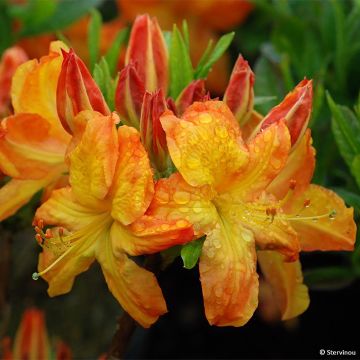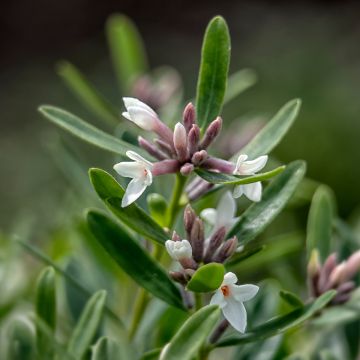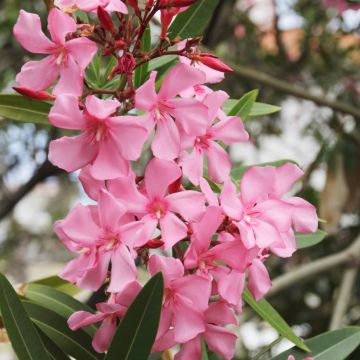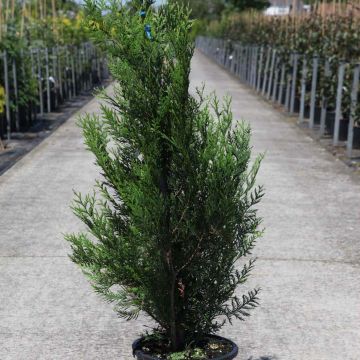

Rhododendron Gartendirektor Rieger


Rhododendron Gartendirektor Rieger
Rhododendron Gartendirektor Rieger
Rhododendron x williamsianum Gartendirektor Rieger
Williams' Rhododendron
Special offer!
Receive a €20 voucher for any order over €90 (excluding delivery costs, credit notes, and plastic-free options)!
1- Add your favorite plants to your cart.
2- Once you have reached €90, confirm your order (you can even choose the delivery date!).
3- As soon as your order is shipped, you will receive an email containing your voucher code, valid for 3 months (90 days).
Your voucher is unique and can only be used once, for any order with a minimum value of €20, excluding delivery costs.
Can be combined with other current offers, non-divisible and non-refundable.
Home or relay delivery (depending on size and destination)
Schedule delivery date,
and select date in basket
This plant carries a 24 months recovery warranty
More information
We guarantee the quality of our plants for a full growing cycle, and will replace at our expense any plant that fails to recover under normal climatic and planting conditions.

Would this plant suit my garden?
Set up your Plantfit profile →
Description
Rhododendron williamsianum Gartendirektor Rieger is a magnificent hybrid variety awarded the Royal Horticultural Society's Award of Garden Merit in England. Let's first mention its evergreen foliage, rounded and slightly curved, with yellow-green petioles that turn red in the sun, and beautiful reddish-copper young shoots on a reddish wood. The bush forms a compact dome. In May, a profusion of flesh-pink buds open into white campanulate flowers, washed with pale pink to salmon pink, with slightly undulate edges, widely open on a macule speckled with red. This vigorous variety appreciates some sun to flower well. It is a hardy selection, with a mid-early flowering. 'Rhodos', as spectacular as they are exclusive, only thrive in acidic, rich, moist, well-drained soil, and under humid climates.
Rhododendrons are plants of the Ericaceae family, like heathers. The cultivar Gartendirektor Rieger is the result of cross-breeding between the Adriaan Koster variety and the botanical species Rhododendron williamsianum, from which it inherited several characteristics. It forms a large, ramified bush with a dense, dome-shaped habit, wider than it is tall, reaching approximately 1.40 m in height and 1.70 m in spread at the age of 10, under good growing conditions, in open ground. Its leaves are oval in shape, quite rounded, dark green and glossy, with yellow-green petioles that turn red in shaded areas. They persist throughout winter. In May, for approximately three weeks, large clusters or spherical corymbs of pinkish flowers bloom at the end of the branches. They open into clusters of 4 to 9 flowers, with undulate-edged petals. The petals are white, and on the upper petal, a speckled red macule adds a beautiful touch.
Rhododendron williamsianum Gartendirektor Rieger is a hardy plant down to -20°C. Although they generally prefer partial shade, this one appreciates a bit more sun, while still avoiding the hottest hours. With its exquisite flowering, it brightens up a slightly shaded area of the garden, alongside plants with pink, white, purple, or blue flowers. Paired with Kalmias, Azaleas, Pieris, or other rhododendrons from the same group, it allows for the creation of superb patchworks of textures and colours in spring. Also consider pairing it with Japanese Maples or Ferns and Japanese Anemones.
Report an error about the product description
Rhododendron Gartendirektor Rieger in pictures
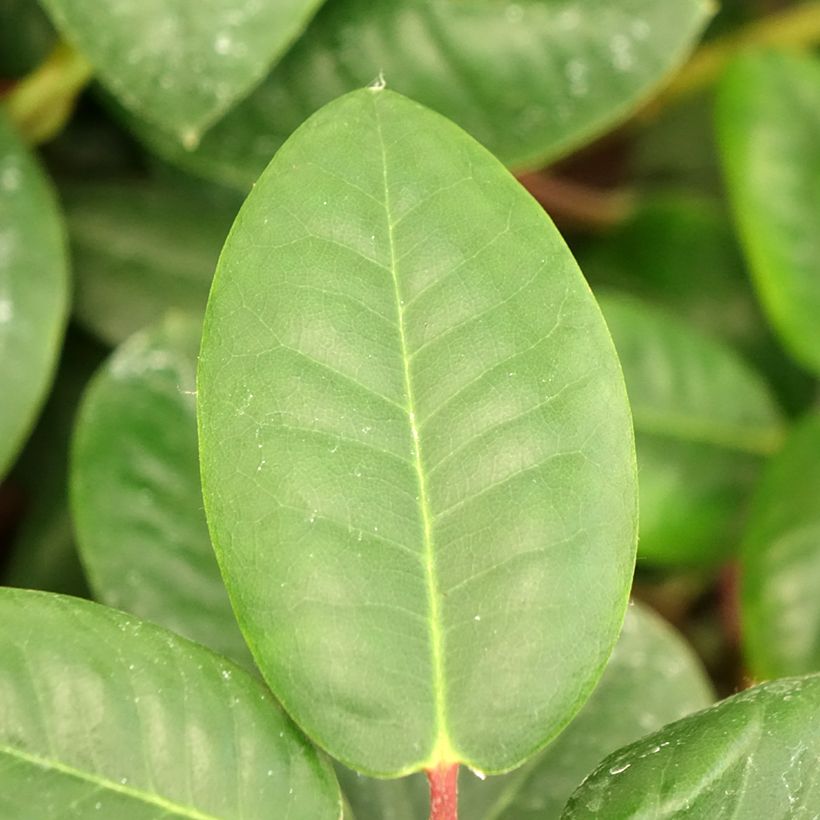

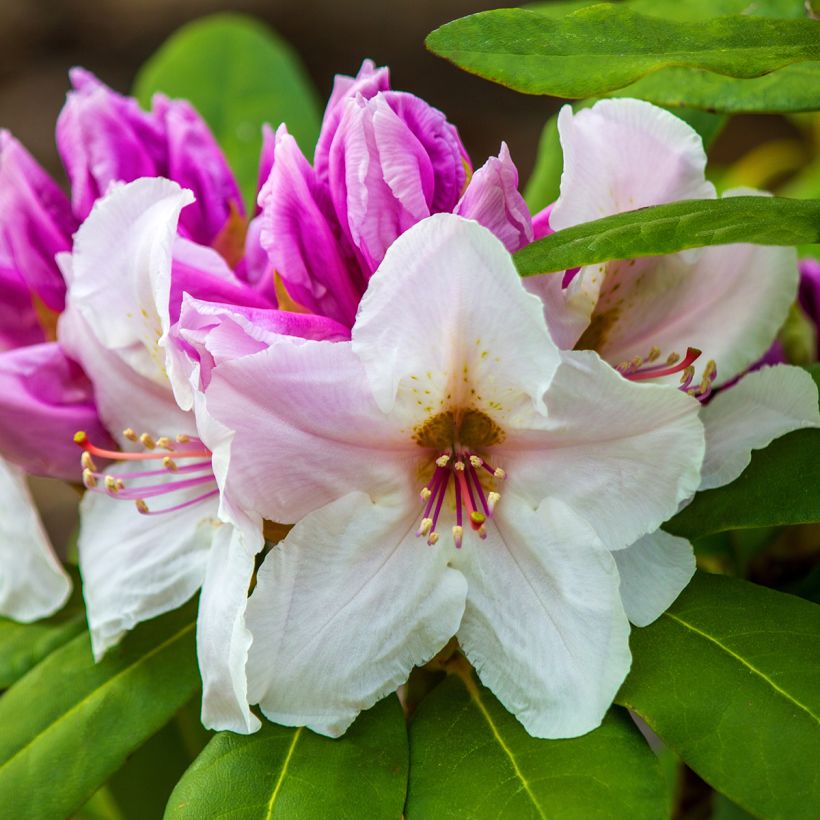

Plant habit
Flowering
Foliage
Botanical data
Rhododendron
x williamsianum
Gartendirektor Rieger
Ericaceae
Williams' Rhododendron
Cultivar or hybrid
Other Small Rhododendron
View all →Planting and care
Plant Rhododendron williamsianum Gartendirektor Rieger in a partially shaded or slightly sunnier location, always avoiding the hottest hours, protected from cold and drying winds, in a cool, humus-rich and light soil, with a tendency towards acidity or neutrality. Like all plants of the Ericaceae family, it does not tolerate alkaline soils or heavy soils saturated with water in winter. Avoid planting at its base, as its shallow roots do not tolerate competition from other plants, especially for water resources.
Dig a hole three times larger than the pot. Soak the root ball in non-limestone water and plant the bush at the collar level, in a mixture composed of 1/4 turf, leaf compost, gravel or pumice, and loam. Water generously and keep the soil moist in summer. Azaleas and Rhododendrons have a shallow root system. As a result, they are sensitive to long periods of drought. That is why a humus-rich soil and abundant watering during dry periods are recommended. In addition, this root system is not very strong, which is why it is essential to lighten heavy soils with draining materials (gravel, pumice, clay pellets) at planting. Apply a mulch of shredded pine bark at the base of the bush every spring to keep the soil cool while maintaining an acidic pH.
Maintenance consists of removing faded flowers in summer and clearing dead branches. Azaleas and Rhododendrons can sometimes be attacked by weevils that eat the edges of leaves and rootlets, as well as the famous "rhododendron beetle" which does not often cause severe damage. Effective organic solutions exist today against weevils. Yellowing of the leaves (chlorosis) in Rhododendrons indicates poor assimilation of iron in the soil and causes premature death of the plant. While limestone is often the cause, poorly drained soil or a deeply planted root ball can also explain the phenomenon.
"Rhodos" thrive in cooler climates, planted in limestone-free soil and in a humid environment. Their cultivation in hotter and drier climates is often doomed to failure in the long run, despite all the efforts made to acclimatise them.
Planting period
Intended location
Care
This item has not been reviewed yet - be the first to leave a review about it.
Similar products
Haven't found what you were looking for?
Hardiness is the lowest winter temperature a plant can endure without suffering serious damage or even dying. However, hardiness is affected by location (a sheltered area, such as a patio), protection (winter cover) and soil type (hardiness is improved by well-drained soil).

Photo Sharing Terms & Conditions
In order to encourage gardeners to interact and share their experiences, Promesse de fleurs offers various media enabling content to be uploaded onto its Site - in particular via the ‘Photo sharing’ module.
The User agrees to refrain from:
- Posting any content that is illegal, prejudicial, insulting, racist, inciteful to hatred, revisionist, contrary to public decency, that infringes on privacy or on the privacy rights of third parties, in particular the publicity rights of persons and goods, intellectual property rights, or the right to privacy.
- Submitting content on behalf of a third party;
- Impersonate the identity of a third party and/or publish any personal information about a third party;
In general, the User undertakes to refrain from any unethical behaviour.
All Content (in particular text, comments, files, images, photos, videos, creative works, etc.), which may be subject to property or intellectual property rights, image or other private rights, shall remain the property of the User, subject to the limited rights granted by the terms of the licence granted by Promesse de fleurs as stated below. Users are at liberty to publish or not to publish such Content on the Site, notably via the ‘Photo Sharing’ facility, and accept that this Content shall be made public and freely accessible, notably on the Internet.
Users further acknowledge, undertake to have ,and guarantee that they hold all necessary rights and permissions to publish such material on the Site, in particular with regard to the legislation in force pertaining to any privacy, property, intellectual property, image, or contractual rights, or rights of any other nature. By publishing such Content on the Site, Users acknowledge accepting full liability as publishers of the Content within the meaning of the law, and grant Promesse de fleurs, free of charge, an inclusive, worldwide licence for the said Content for the entire duration of its publication, including all reproduction, representation, up/downloading, displaying, performing, transmission, and storage rights.
Users also grant permission for their name to be linked to the Content and accept that this link may not always be made available.
By engaging in posting material, Users consent to their Content becoming automatically accessible on the Internet, in particular on other sites and/or blogs and/or web pages of the Promesse de fleurs site, including in particular social pages and the Promesse de fleurs catalogue.
Users may secure the removal of entrusted content free of charge by issuing a simple request via our contact form.
The flowering period indicated on our website applies to countries and regions located in USDA zone 8 (France, the United Kingdom, Ireland, the Netherlands, etc.)
It will vary according to where you live:
- In zones 9 to 10 (Italy, Spain, Greece, etc.), flowering will occur about 2 to 4 weeks earlier.
- In zones 6 to 7 (Germany, Poland, Slovenia, and lower mountainous regions), flowering will be delayed by 2 to 3 weeks.
- In zone 5 (Central Europe, Scandinavia), blooming will be delayed by 3 to 5 weeks.
In temperate climates, pruning of spring-flowering shrubs (forsythia, spireas, etc.) should be done just after flowering.
Pruning of summer-flowering shrubs (Indian Lilac, Perovskia, etc.) can be done in winter or spring.
In cold regions as well as with frost-sensitive plants, avoid pruning too early when severe frosts may still occur.
The planting period indicated on our website applies to countries and regions located in USDA zone 8 (France, United Kingdom, Ireland, Netherlands).
It will vary according to where you live:
- In Mediterranean zones (Marseille, Madrid, Milan, etc.), autumn and winter are the best planting periods.
- In continental zones (Strasbourg, Munich, Vienna, etc.), delay planting by 2 to 3 weeks in spring and bring it forward by 2 to 4 weeks in autumn.
- In mountainous regions (the Alps, Pyrenees, Carpathians, etc.), it is best to plant in late spring (May-June) or late summer (August-September).
The harvesting period indicated on our website applies to countries and regions in USDA zone 8 (France, England, Ireland, the Netherlands).
In colder areas (Scandinavia, Poland, Austria...) fruit and vegetable harvests are likely to be delayed by 3-4 weeks.
In warmer areas (Italy, Spain, Greece, etc.), harvesting will probably take place earlier, depending on weather conditions.
The sowing periods indicated on our website apply to countries and regions within USDA Zone 8 (France, UK, Ireland, Netherlands).
In colder areas (Scandinavia, Poland, Austria...), delay any outdoor sowing by 3-4 weeks, or sow under glass.
In warmer climes (Italy, Spain, Greece, etc.), bring outdoor sowing forward by a few weeks.






























